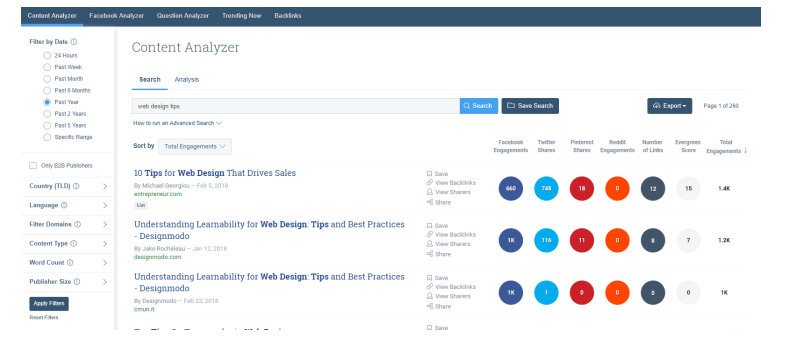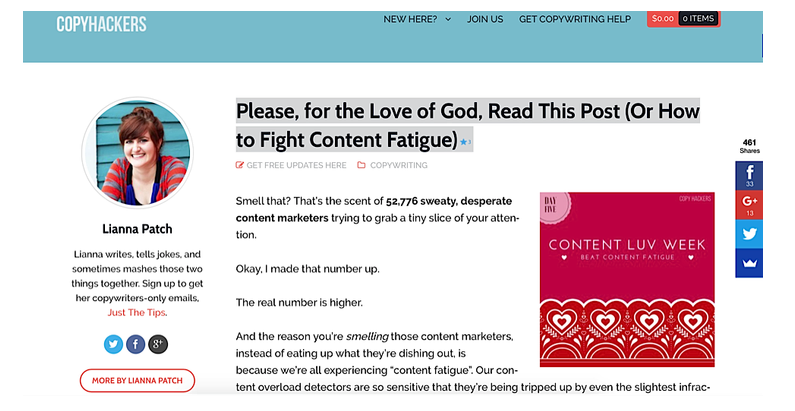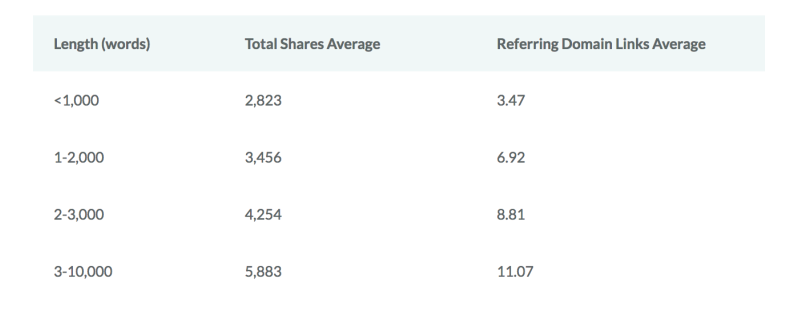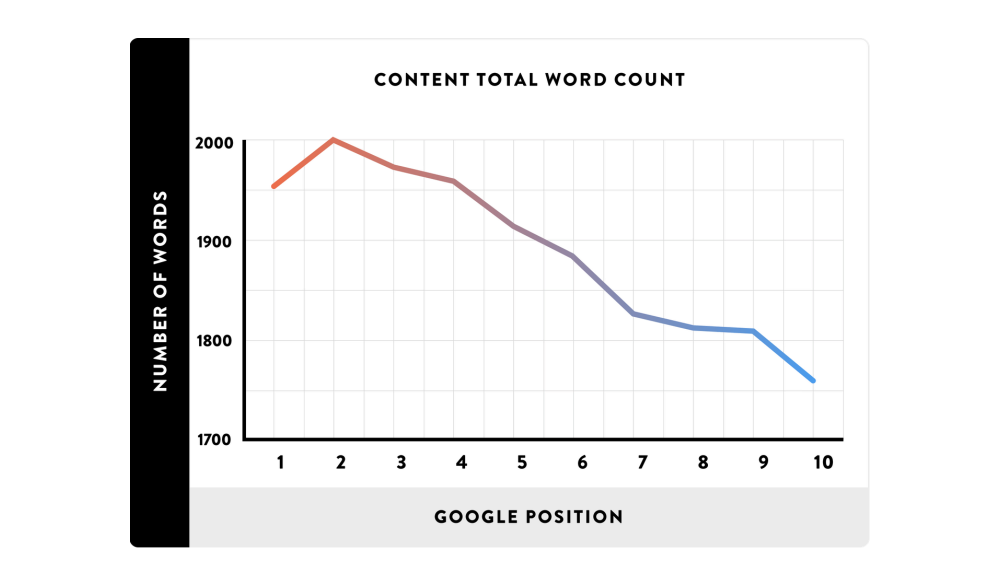How to Write Valuable, Magnetic Content
Are you struggling to write high-performance content for your blog?
If so, here’s the good news! Creating valuable and magnetic content is a straightforward process. However, one of the most egregious misconceptions in digital marketing is that blog writing is a plug-and-play activity.
Many businesses today have horrible and completely irrelevant blogs that fail to achieve any type of success and this is because the incorrect blogging approach is taken, time and time again.
If you find yourself in this situation, this post will explain some exclusive tips for brainstorming content ideas, writing, promoting, and putting all of the finishing touches on high-quality digital content.
Read on below to learn more about how you can write the perfect blog post!
Regardless of how you answer, all of these are good options to reach out to inactive subscribers. That's because subscribers can go dark for just about any reason.
Whether they're on vacation or tremendously busy with their job or family, you can't expect all of your subscribers to stay engaged on your email list. However, if they aren't engaged and are unresponsive, you have to do something, or you'll be wasting your time trying to communicate with them.
In this article, you will learn about the most effective method of reforming inactive subscribers, which is creating a win-back campaign. Continue reading below to learn what a win-back campaign is, why it's essential, and how you can create one for your business.
Step #1: Topic Research
If you start writing a blog post without doing any sort of preliminary research, then you just made a very crucial mistake.
So, you need to start over
One of the biggest mistakes novice writers make is thinking that they can randomly generate content ideas from the top of their head and turn them into successful blog posts.
Needless to say, what they only manage to create are blog posts that miss the mark.
If you’ve been in business long enough, you should already have an idea of who your target audience is. So, essentially, you shouldn’t have to go through the lengthy process of trying to understand just how your blog will help your audience.
Before you begin writing, you’re going to need to perform topic research. Not keyword research. Topic research!
In this section, you will learn how you can generate some interesting content ideas your audience is going to love.
One popular tool for brainstorming topics is BuzzSumo. This resource works almost like a keyword research tool.
Simply type in a broad search term that you want to focus your content on, click the search button, and you should see a full list of the most popular content ideas on the web.

By using BuzzSumo, you can see which posts are receiving the most social media engagements. You can also see the “evergreen score” for particular pieces of content.
You may be wondering “why is all of this important?”
One of the most important lessons you can learn as a writer is to always build on what is already working.
Take for example the first post in the snapshot above “10 Tips for Web Design That Drives Sales“.
There are so many reasons why this post is popular. To begin, an article like this is a perfect example of evergreen content. Businesses and even web design agencies will always be interested in fundamental website tips that can increase sales.
What’s more is that the title of the article is straightforward and has some clickbait potential, which makes it more likely to be shared on social media.
You can easily take a few pointers from the top-performing blog posts on BuzzSumo to create successful content ideas of your own.
For example, you could create a similar article to 10 Tips for Web Design That Drives Sales, by writing a more specific post, such as “10 Incredible Landing Page Techniques That Will Increase Your Conversion Rates By 500%”.
As you can see, I simply took an idea that has already worked and added a unique spin to it that should garner some interest online. Alternatively, you can make the post longer to increase its SEO value and usefulness to your target audience.
The major point that's being made here is that you can perform basic research on BuzzSumo to see the type of content that’s already popular online.
Once you know what type of content is popular in your niche, you can brainstorm a unique version to provide your audience with fresh information.
When you’re all done with the researching aspect of blog writing, you’re all set to move on to the challenging part.
It’s time to start writing.
Step #2: Start Writing
Great! You’ve made it through the monotony of topic research and now you can start writing.
Unfortunately, writing is an intricate skill that takes some time to master. But, the good news is that these tips are going to save you weeks (and possibly months) of trial and error by giving you some helpful writing tips.
Let’s begin.
Maintain a Conversational Tone:
No one wants to read anything in a technical and matter of fact tone.
If you’re going to keep your readers listening to what you have to say, you’re going to have to speak to them in a very personal way.
Want to see an example of a blog that utilizes the art of conversational writing perfectly? Check out this post from the CopyHackers’ blog.

Can you see how Lianna breaks down the topic of content marketing into a digestible article?
She’s writing just like how she would speak in a real conversation, and this is key if you want more people to read your blog.
Eliminate Fluff and Jargon:
It’s important to only write what you mean and mean what you write. Take a minute to look at a common example of a fluffy sentence that’s way too complicated to keep anyone’s attention.
The major and splitting difference between the two weight-loss programs was that one program was devoted to explaining arbitrary and simple weight loss methods for beginners and the other was geared more towards people who have been trying to lose weight for years without any avail.
Is all of this necessary to explain the difference between two weight loss programs?
It isn’t.
While it’s okay to use big words from time to time, keep your sentences short and concise.
If you just have to write long sentence, make sure you break it up into small paragraphs so that it’s easier to read.
To make your sentences short, you have to stop using fluff.
Fluff exists all over the internet and is used by many brands and professional writers.
If you don’t know what fluff is, then this sentence should tell you all you need to know.
The brilliantly intelligent dog leaped right over the gate and ran into the street, dodging a myriad of different cars that nearly crashed to avoid him.
As you can see, this sentence contains way more information than it should. This is called fluff, or any extraneous addition to an article that excessively adds to its meaning or unnecessarily reinforces what was already stated.
Did you see how that was written?
The definition was full of fluff!
If you remove the fluff from the sentence written above, it should read like this:
The intelligent dog leaped over the gate and ran into the street, dodging dozens of cars that rushed to avoid him.
Here’s what was removed.
- The phrase “brilliantly intelligent dog” is excessive. You don’t need that many adjectives. The phrase “Leaped right over” is also excessive. “Leaped over” is perfectly fine
- The phrase “dodging a myriad of different cars that nearly crashed to avoid him” is overly complicated. Keep it concise!
Although this tip sounds way too simplistic and pretty tedious, it can make the difference in making your blog readable and simple to understand.
Now, let’s move on to the final tip in this section, which is the use of jargon. We all use it to an extent because jargon is often easier to use in a particular context.
While it’s great to use jargon at a business conference, or even in the workplace, you must avoid using this type of industry slang in your writing.
Let's provide an example. Let’s say that you're a business owner that has no idea of how internet marketing works.
You want to purchase a website for your business, so you contact your local web design agency and read this type of writing in their sales copy.
Acme Web Design Agency is a full-service B2B web design agency that combines excellent design with a fully-interactive website.
This sentence is the epitome of jargon, and even that would be a huge understatement.
No one will ever contact a local website agency and ask if they are truly a “full-service B2B web design agency that combines excellent design with a fully-interactive website.”
Without being too simplistic, break down your writing in a way where your audience fully understands what you’re talking about and what they will be potentially paying for, like so:
Acme Web Design Agency provides state-of-the-art websites that won’t cost you an arm or a leg.
This sentence doesn’t use jargon. As a result, it’s easier to read and it contains some attractive words (like “affordable“) that will get potential clients wanting to learn more about your services.
Now that you know not to use jargon, let’s move on to the next section.
Write Long-Form Content:
Here are some interesting statistics.
According to leading SEO practicies blogs over 1000 words are much more likely to be shared than smaller posts.

Google is much more likely to rank longer content higher than shorter content, according to Backlinko.

Why is long-form content more successful than shorter content? The answer is pretty simple.
Long-form content provides more value to readers. It answers more questions. It also provides more research and data that makes it more likely for readers to establish you as an industry authority.
Sure, it may seem difficult to write anything above 1500 words. But, if you have an interesting topic to share, it shouldn’t be too hard.
If you have something to share with your audience and you feel passionate about the subject, you should accomplish this goal pretty easily.
However, if you don’t have that much writing experience, you should try to write content that’s at least 1000 words first. When you get the hang of it, you can explore writing longer pieces of content, and Google and your audience will reward you for it.
Overall, writing is like a muscle. The more you write, the more you get better at it. Don’t expect your writing to be perfect on the first day.
After all, these tips are only designed to help you gradually build successful writing habits that will help you achieve greatness from your blog.
Step #3: Putting On the Finishing Touches
Once you’re done writing, it’s time to optimize your post to make sure it’s ready to go viral online and on social media.
This section is a bit straightforward, so here are some proven ways to make sure your blog post is ready to go.
Proofread:
It’s honestly very embarrassing if your content contains blatant spelling mistakes and grammatical errors. You should use Grammarly to fully proofread your content before it goes live.
It's also recommended for you to perform a manual, follow-up check to make sure your content is carefully scrubbed before you publish it.
Brainstorm Possible Titles:
One of the most difficult aspects of writing valuable content is to brainstorm an interesting or "magnetic" title. Ultimately, you have to make sure the title you come up with grabs your reader's attention instantly.
For evergreen content (like this article), you can use a simple blog title. However, if you have an amazing idea to share or if you have some insight that can help people for a particular moment, use clickbait titles.
Create a Thumbnail Image:
After the header, the thumbnail image is the most important feature of a blog article. Great thumbnail images encourage people to stop in their tracks and click on your blog post, especially if it’s being promoted on social media.
To create an attractive thumbnail image for your blog post, click here to use Buffer’s tool to get the job done.
Edit Your Article:
In this final step, you need to make sure your article can be digested quickly for busy readers.
A majority of online readers prefer to skim articles, especially if they’re longer than average. Therefore, you’re responsible for making your content skimmable and easy to read.
To do so, bold information that you want your audience to absolutely read like facts and strong statements. Italicize useful quotes, sarcasm, and specific facts that you want your readers to observe as well.
You can also break up content into small paragraphs and keep your sentences short to get your point across with precision and clarity.
Step #4: Promote
Once your article has been written and published, it’s now time to make sure others read the good news! After all, well-written content achieves absolutely nothing if no one knows about it.
Of course, social media is the best way to promote your content in front of billions of people. If you aren’t good at using social media or if you lack decent social media marketing skills, refer to these tips to spread your ideas to the masses.
Keep On Promoting: One of the biggest mistakes writers make is promoting their content only once on social media. It's important to realize that the biggest brands on social media reintroduced their content over and over again. Keep on promoting your content online to make sure that your articles are viewed by a diverse audience.
Use Hashtags: If you plan on promoting your content on Twitter or Instagram, use relevant hashtags to ensure that your content is viewed by people in your target audience. For example, if you’re promoting an article on global warming, use popular hashtags such as #globalwarming, #planetearth, or #earthday.
Reach Out to Influencers: If you want to become an authority in your niche, you’re going to have to make sure that your content is read and shared by your industry’s influencers. For example, this post could tag marketing experts like Neil Patel in a social media post to spread our message to a wider audience. This post could even get a retweet, like, or reply from Neil Patel.
Receiving quality results from your social media marketing plan is an experimental process. There isn’t just some one-size-fits-all strategy for promoting content on social media.
All in all, you’re going to have to try your hand at promoting your content to see what works for you. So, promote, promote, and keep on promoting to start seeing some tangible growth in traffic and watch-time from your content.
Final Words:
As you can see, writing valuable and magnetic content is a time-consuming process that can take a lot of time to master.
The difficulty lies in the fact that your content is meant to be a versatile resource. Ideally, consumers, people searching for information, and even search bots have to use your content.
The major challenge for a novice writer is to write content that appeals to a human audience, while still catering to search engines so their content is paired with the right search results.
Maintaining a polished blog is crucial for engaging with your audience, achieving a higher online ranking, and encouraging your audience to purchase your products and services.
Interested in hiring us to help you craft blogs that will help you with your SEO? Want to meet with us to help you brainstorm ideas? Schedule a meeting with us, today!


